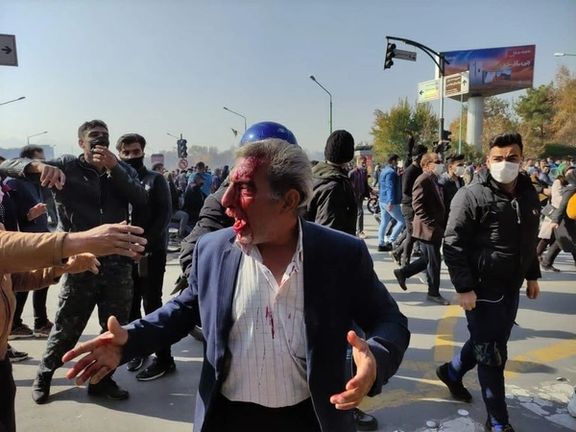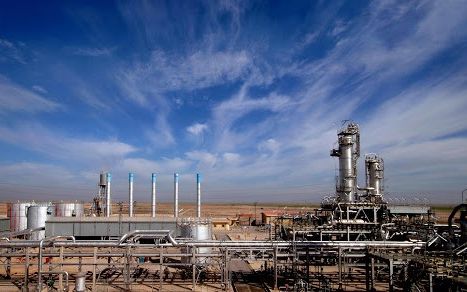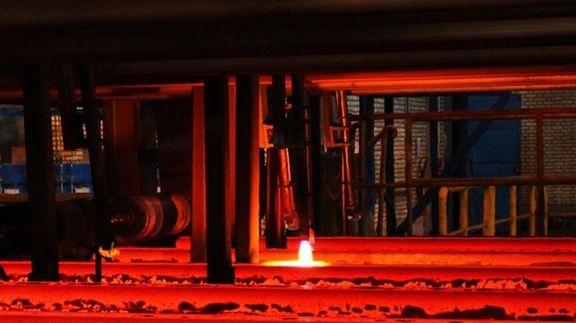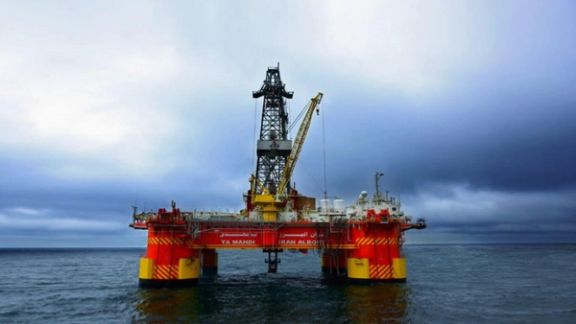Iran's Exiled Prince Praises The 'Bravery' Of Protestors In Esfahan

Iran’s exiled Prince Reza Pahlavi has praised the “bravery” of the people of Esfahan who gathered to protest on Friday and were attacked by special riot police.

Iran’s exiled Prince Reza Pahlavi has praised the “bravery” of the people of Esfahan who gathered to protest on Friday and were attacked by special riot police.
In a series of Tweets, the US-based heir to the Iranian throne, said the people in the city exhibited “bravery, unity, resistance and steadfastness in seeking justice.” He added that the unarmed residents of Esfahan and farmers who had come to the city faced brutality by “armed mercenaries of the Islamic Republic” and showed to what extent the regime is afraid of the nation.
People have been protesting lack of water for two weeks. The government first tolerated the protests, but this week they decided to use force against demonstrators. On Thursday, they attacked and burned a makeshift camp protesters had set up on the dry riverbed of the iconic Zayandeh Roud river and on Friday they cracked down on residents who came out to protest.
Prince Reza Pahlavi also urged unity among different regions on the issue of water scarcity. Critics have alleged that the government is trying to put one region against the other over who will get more water.
Drought and mismanagement by the government have led to a serious water crisis in Iran.

A prominent former lawmaker in Iran says officials and state-run media lied to the people about Covid-19, particularly in early 2020 when the pandemic began.
Heshmatollah Falahatpisheh, a former Foreign Policy and National Security Committee chief in the Iranian Parliament (Majles) told Didban Iran [Iran Monitor] news website on Thursday, that the Iranian state television's recent claim about having informed all government entities about the pandemic at its onset was not true.
In early 2020, Iranian officials including then-President Hassan Rouhani and Supreme Leader Ali Khamenei denied international media reports about the pandemic fearing that the news would dissuade the people from going to the polls to vote in the February 2020 parliamentary election. The state-run media also ridiculed international media and accused them of scaremongering. Supreme Leader Khamenei and several leading hardline clerics later blamed foreign countries including the United States for spreading the virus and scaring Iranians.
Falahatpisheh also charged that all Iranian officials who denied the spread of coronavirus to Iran during in that period knew about the pandemic and deliberately lied to the nation.
Meanwhile, Falahatpisheh said some Iranian airlines carried Chinese passengers to and from China from January to March 2020 when China's own airlines were grounded because of the pandemic. Many Iranian and international media outlets at the time reported that Mahan Air, an Iranian airline linked to the Revolutionary Guards (IRGC) was involved in airlifting Chinese passengers and used the same airlines for domestic flights in Iran, in a way, helping spread the virus.
Documenting one of those flights, Flight tracking website Flight Radar 24 reported on February 20, 2020 that Mahan Airlines, which is sanctioned by the US, flew from Beijing to Tehran (Flight W578) on the date and landed at 4:40 in the morning in the Imam Khomeini Airport in Tehran. Iran announced its first cases of coronavirus infections and deaths hours after the election on February 19.
Although Iranian officials said on January 31, 2020 that all flights had been stopped, Mahan Air continued flights to china but said under media pressure that it was not carrying Iranian passengers and that it was only airlifting Chinese passengers who were stranded in Turkey.
Falahatpisheh charged that some Iranian airlines acted as though they were companies of a Chinese colony.
Meanwhile, the former lawmaker lashed out at Iranian officials who imposed a high toll on the people by pushing for the development of homegrown Covid vaccines. He charged that those officials bluffed about a "national vaccine" and the people of Iran paid the price of those bluffs with their lives.
However, he did not mention that Ali Khamenei's support for the idea of national vaccines and his ban on the import of US and UK made vaccines in January led to tens of thousands of more deaths in Iran before the government was allowed to import foreign-made vaccines after hardline President Ebrahim Raisi took office in August.
Falahatpisheh blamed the officials' lies and greed for the lives lost in Iran in the absence of an effective vaccination effort until August.
He called on the parliament to launch an investigation into the mismanagement and errors of the officials during the pandemic.

Oil prices dived more than 5% on Friday as a new Covid-19 variant spooked investors and added to concerns that a supply surplus could swell in early 2022.
Oil fell with global equities markets on fears the variant, which Britain said scientists considered the most significant found to date, could restrict travel and dampen economic growth and fuel demand.
Investors were also watching China's response to the US release of millions of barrels of oil from strategic reserves in coordination with other large consuming nations, part of its bid to cool prices.
Such a release is likely to swell supplies in coming months, an OPEC source said.
Iranian production was also in focus, with indirect talks due to resume on Monday between Iran and the United States on reviving a 2015 nuclear deal that could lead to the lifting of U.S. sanctions on Iranian oil exports.
However, the failure of Iran and the International Atomic Energy Agency to reach even a modest agreement on monitoring of Tehran's nuclear facilities this week bodes poorly for next week's talks, Eurasia analyst Henry Rome said.
The forecasts cloud the outlook for a Dec. 2 meeting of OPEC and its allies, known as OPEC+, when the group will discuss whether to adjust its plan to increase output by 400,000 bpd in January and beyond.
Reporting by Reuters

Security forces in Esfahan, Iran's third largest city, blocked roads and anti-riot special forces on motorcycles attacked protesters Friday, firing tear gas.
Videos posted on social media Friday morning show thousands of protesters in the city's dry riverbed and its adjacent boulevards chanting slogans and refusing to leave despite heavy use of tear gas, firing guns in the air and paramilitary and plainclothes motorcyclists driving into crowds. Some social media users claim protesters are being targeted with birdshots.
Farmers in Esfahan province came to the provincial capital two weeks ago and set up camp in the dry Zayandeh Roud riverbed in center of Esfahan, a city of four million, demanding water for irrigation. Last Friday, tens of thousands of city residents joined them in a large protest that authorities did not interfere with, as it was the anniversary of the November 2019 bloody protests. The government probably did not want any bad publicity on the anniversary.
Some videos Friday showed people who have been injured including a young man with blood on his face holding a handkerchief to his eye while shots are heard in the background. In another video an old man is seen also holding a handkerchief to his injured eye while a young police officer tries to help him. "Allow Muslims, the people see this [injury]," the old man who wants people to see his eye repeats
"Fear not, fear not, we are all united," protesters are seen in one of the videos chanting while another video shows some protesters throwing stones, others cheering and booing, and a small group of security forces and plainclothesmen fleeing in the dry riverbed. A third video shows security forces charging against the crowd of protesters on foot and on motorcycles in the riverbed while hundreds lining the banks of the river chant "You have no shame".
Videos also showed crowds shouting "Reza shah, god bless your soul," in reference to the first Pahlavi monarch who reigned from 1925 to 1941.
Other videos show people in the boulevards chanting "Down with the Dictator" and "Death to Khamenei".
In preparation for the protest planned Friday, security forces including riot police and armored vehicles deployed to Esfahan on Thursday and closed some streets to traffic. Earlier on Thursday, security forces attacked the farmers' makeshift camp in the dry riverbed set up two weeks ago and burned their tents, bulldozed the remains, and arrested some protesters. State-run broadcaster (IRIB), however, in a report Thursday morning alleged that "opportunists" were responsible for burning the tents and claimed that some were arrested but no evidence was produced.
State media also reported Thursday that farmers' protests had finished after an agreement with the authorities to resolve their problems. The state-run television said Thursday security forces had only "managed the scene" and dispersed the farmers afters their tents were set on fire by two saboteurs. The political deputy of Esfahan’s governor said Thursday that any further protests would be attributed to “troublemakers” and “those not related to farmers”. Social media users reported Thursday that many people had received text messages from security agencies warning them not to convene where protests were planned to take place Friday.
Protesters have also been chanting in support of unity with the people of the neighboring Chahar Mahal and Bakhtiari Province where the capital Shahr-e Kord has also seen extensive water protests in the past few day. "This is Esfahan, Supporter of Chahar Mahal," they chanted.
The Water Company of Yazd Province Thursday evening said the pipes transferring water from Esfahan to Yazd had been destroyed, leaving Yazd without drinking water. A video posted on Twitter shows a crowd, apparently Esfahan farmers who have broken the pipe before, chanting Allah-u Akbar (God is Great) and water gushing out a pipe in an area outside the city. The government in recent years has diverted the Zayandeh Roud waters to Yazd, an arid region, to develop industries.
In Shahr-e Kord Thursday hundreds of protesters chanted behind the closed gate of the provincial governor's office, demanding the governor to come out of the building, booing security forces and ripping a banner of the Basij paramilitary, an arm of the Revolutionary Guards (IRGC).

Iran’s steel production fell by 15 percent in October, following smaller declines earlier in the year resulting from lack of electricity, after years of growth.
The World Steel Association in its latest report showed Iran as the tenth largest producer in the world after Brazil but with a large drop, which dragged down overall steel production in the Middle East.
Iran has been suffering from an acute electricity shortage in recent years as its natural gas production, feeding power plants, fails to keep up with domestic demand. Lack of investments and technology resulting from years of various sanctions have gradually reduced output in operating gas fields.
Iran has been counting on exporting more steel and other metals, including copper and iron ore to reduce dependance on oil exports. The drop in steel production would hurt the government’s foreign currency revenues at a time when US sanctions have reduced its oil export income.
Iran produced around 29 million tons of steel in 2020, which was 16 percent higher than in 2018 and 141 percent more than a decade earlier.
Iran’s Steel Producers’ Association has also confirmed that production of metals fell between 3-13 percent since March 21, the beginning of the current Iranian year.

With a potential output worth $450 billion over its first 20 years, Iran’s Chalous gas field in the Caspian Sea, raises issues of both finance and where the gas might sell.
The field, whose discovery Iran proclaimed in June and which has perhaps 3.5 trillion cubic meters (m3) of gas, reportedly is part of discussions with Russia over a strategic cooperation agreement.
Europe seems an obvious market, and one where Russia already has a large footprint. With demand rising in cold weather, European buyers are struggling due to a lack of supply in both natural gas and LNG (liquefied natural gas).
Iran currently exports gas to Turkey, Iraq, and Armenia. Exporting gas to Europe is a main goal of Iran’s oil ministry even though the necessary infrastructure is not in place.
But Iran is a long way from being able to meet Europe’s growing needs. As the Chalous field is under deep water in the Caspian, extraction requires finance and advanced technology, which Iranian companies lack. Any western European, Chinese, and Russian companies could be deterred by possible punitive US action under ‘maximum pressure’ sanctions. The China National Petroleum Company (CNPC), like France’s Total, left its contract to develop phase 11 of South Pars, Iran’s gas-field in the Persian Gulf, in fear of United States ‘maximum pressure’ sanctions.
Moscow’s Gas Calculations
Russia’s own gas exports to Europe are caught up in Moscow’s complex calculations. Russia supplies around half of the gas imported by the EU, and as much as 90 percent of the gas supplied to some countries. Russia also plans to export LNG to Europe.
Due to the energy crisis, Russian gas is expected to flow within months through the 1,225km (760-mile), €10 billion Nord Stream 2 pipeline, although its approval was recently suspended by Germany's energy regulator, leading to a 17 percent jump in gas prices in the European Union. The Kremlin is doubly keen on Nord Stream 2 because it could transit Russian gas directly to Germany under the Baltic Sea and so avoid paying transit fees to Ukraine.
In the meantime, a daily supply of only 30 million m3 was booked by Gazprom from the Yamal Peninsula, north-west Siberia and a major area of gas reserves, to supply by pipeline to Europe in November, well below a possible 86.5 m3. Gazprom has made no bookings though the Ukrainian pipeline.
Russia’s management of supplies to Europe’s suggests its deal with Iran over Chalous − which according to Oilprice.com would for 20 years allocate 40 percent of production to Russia, 28 percent to China, and 32 percent to Iran − might Moscow managing a potential rival rather than a sales bonanza for Tehran.
Surging Chinese Demand
Might China, where electricity shortages have pushed some provinces to implement power rationing, be a better market for Iranian gas?
With the relative easing of the Covid-19 pandemic, demand has surged in China. In the first six months of 2021, Beijing’s LNG imports exceeded those of Japan, and are likely to do so for the rest of the year. At the end of September, Inter RAO – a Russian power generator – was asked by Chinese authorities to increase supplies to China.
Beijingis well diversified, looking to a variety of countries to meet its energy needs. Around 16 percent of its oil comes from Saudi Arabia, 16 percent from Russia, and 11 percent from Iraq.
Last month the US signed a new agreement to export LNG to China. In 2019, when tariffs were 25 percent, only two US LNG cargoes were shipped to China, but after China lowered tariffs to 10 percent, US LNG exports to China averaged 0.6 billion cubic feet a day (17 million m3) in 2020.
Falling South Pars Output
But even if the Chalous field gas is extracted in the future, its gas could not be easily exported to China or Europe. At present, gas from Iran’s South Pars field goes 70 percent to meet domestic demand, and the field is already entering its second half of life.
According to some estimates, South Pars production will fall annually after 2024 by 28 million m3 a day. To prevent the decline in gas production in South Pars, an investment of $30 billion is required.
High domestic consumption and continuing US sanctions have plunged Iran into an energy squeeze. Until the threat of US sanctions is eased, Iran alone will struggle to extract the reserves of any new oil and gas field it discovers. And as time passes, countries' attention to the energy transition process and the Glasgow environmental agreement will lead countries to switch away from fossil fuels to renewables.